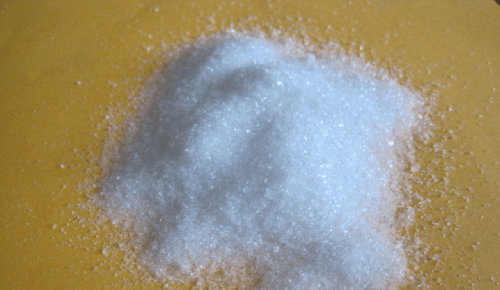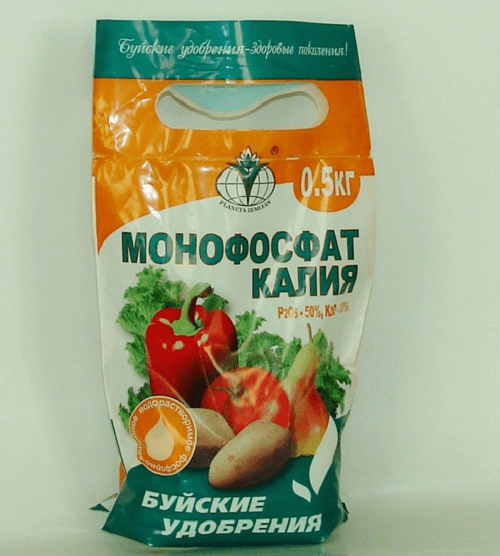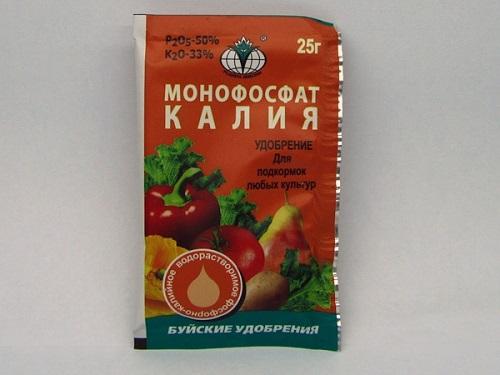Potassium monophosphate - use in the garden
One of the conditions for obtaining a good and high-quality harvest is the timely feeding of crops with fertilizers, both organic and mineral. The latter also includes potassium monophosphate - a concentrated preparation in the form of a white powder, which is widely used for the treatment of garden, garden and even indoor plants.
Benefits and properties of potassium monophosphate

it mineral fertilizer gained recognition among gardeners due to the fact that it is suitable for almost all crops. The drug has good solubility and is quickly absorbed. The percentage of potassium and phosphate included in its composition is approximately 30 to 50.
As a result of the treatment of cultures with potassium monophosphate:
- the taste of the fruit improves;
- the storage period of the crop increases;
- plants are less ill with powdery mildew and other fungal diseases;
- more fruits are tied;
- frost resistance increases;
- lateral shoots are actively growing;
Read also the article: urea is like fertilizer!
Application of the drug

Fertilizer potassium monophosphate is used in the garden in the form of foliar dressing. For this, a solution is prepared from the powder, following the instructions. Plants can be watered with this solution, as well as sprayed on top. The most noticeable effect from the use of the drug is observed during spring processing of plantings and when transplanting seedlings into open ground.
Spraying or watering should be carried out only in the evening, when the sun has lost its activity, so that the fertilizer does not quickly evaporate.
To water the plants growing in the garden, add no more than 20 g of the drug to a bucket of water. Treatment of the soil in which young seedlings are grown is done with a not so strong solution - 10 g of powder per bucket of water.
But for fruit and berry crops, a more concentrated fertilizer will be required: 30 g of fertilizer is diluted in 10 liters of water and the plantings are sprayed.

Treatment with potassium monophosphate gives a good result tomato seedlings, as a result of which the vegetables ripen evenly. It is enough to water the tomatoes with a 2% solution of the drug twice a season (2 g of powder for each liter of water), keeping at least two weeks between waterings.
A feature of potassium monophosphate is its compatibility with other drugs. To achieve a greater effect, it can be combined with many fertilizers, although there are exceptions.
Do not mix potassium monophosphate with fertilizers based on calcium and magnesium.